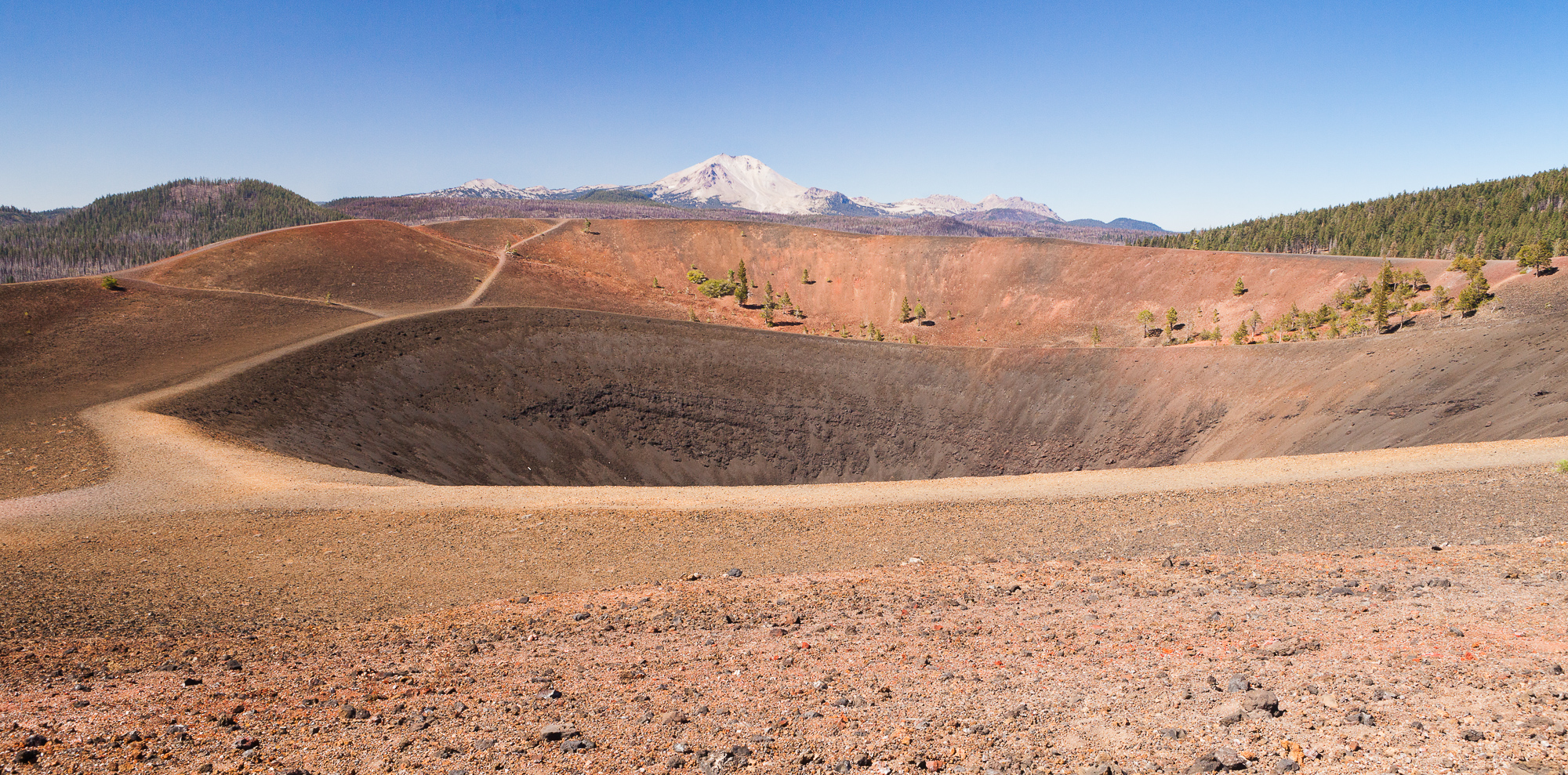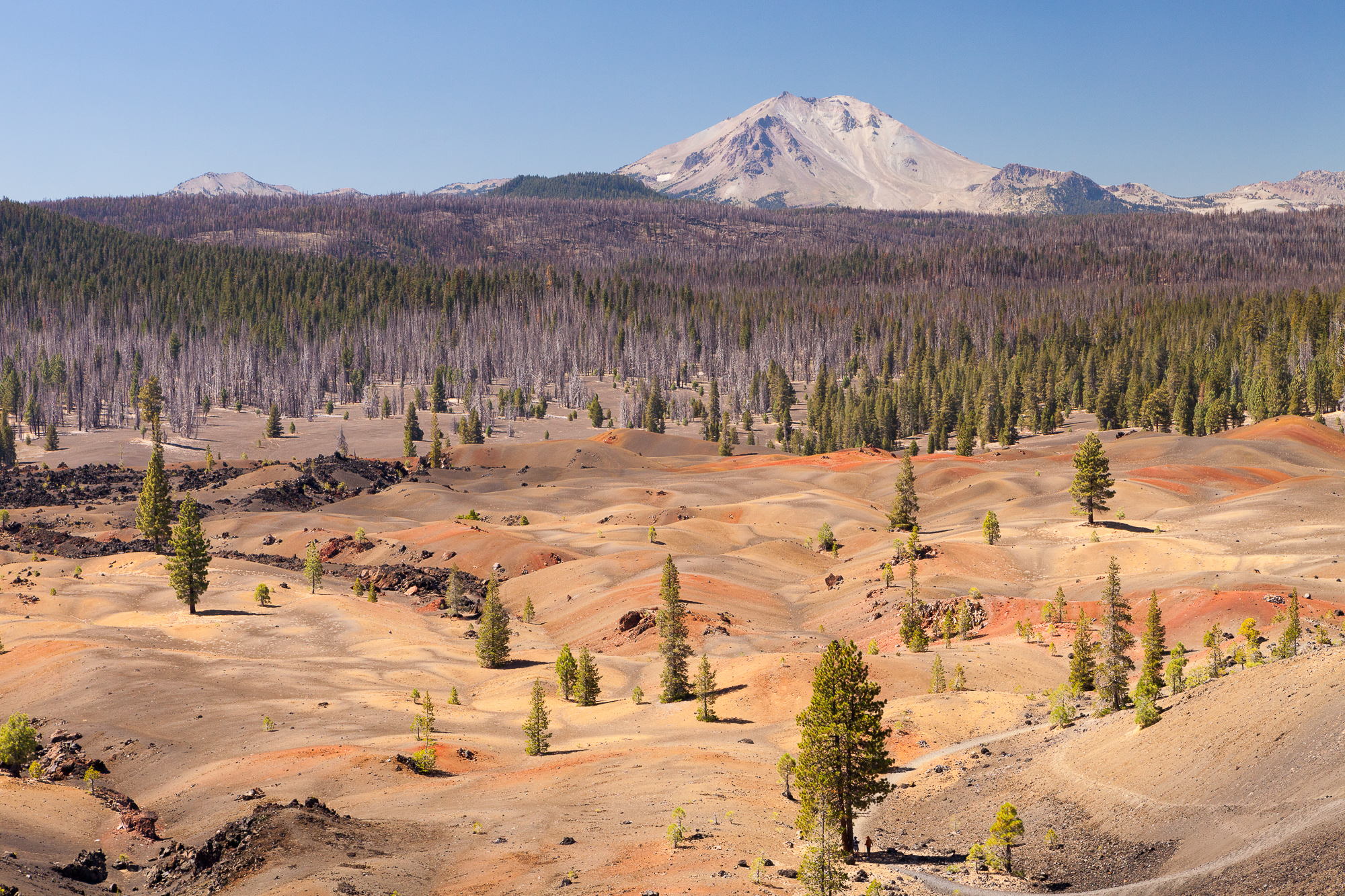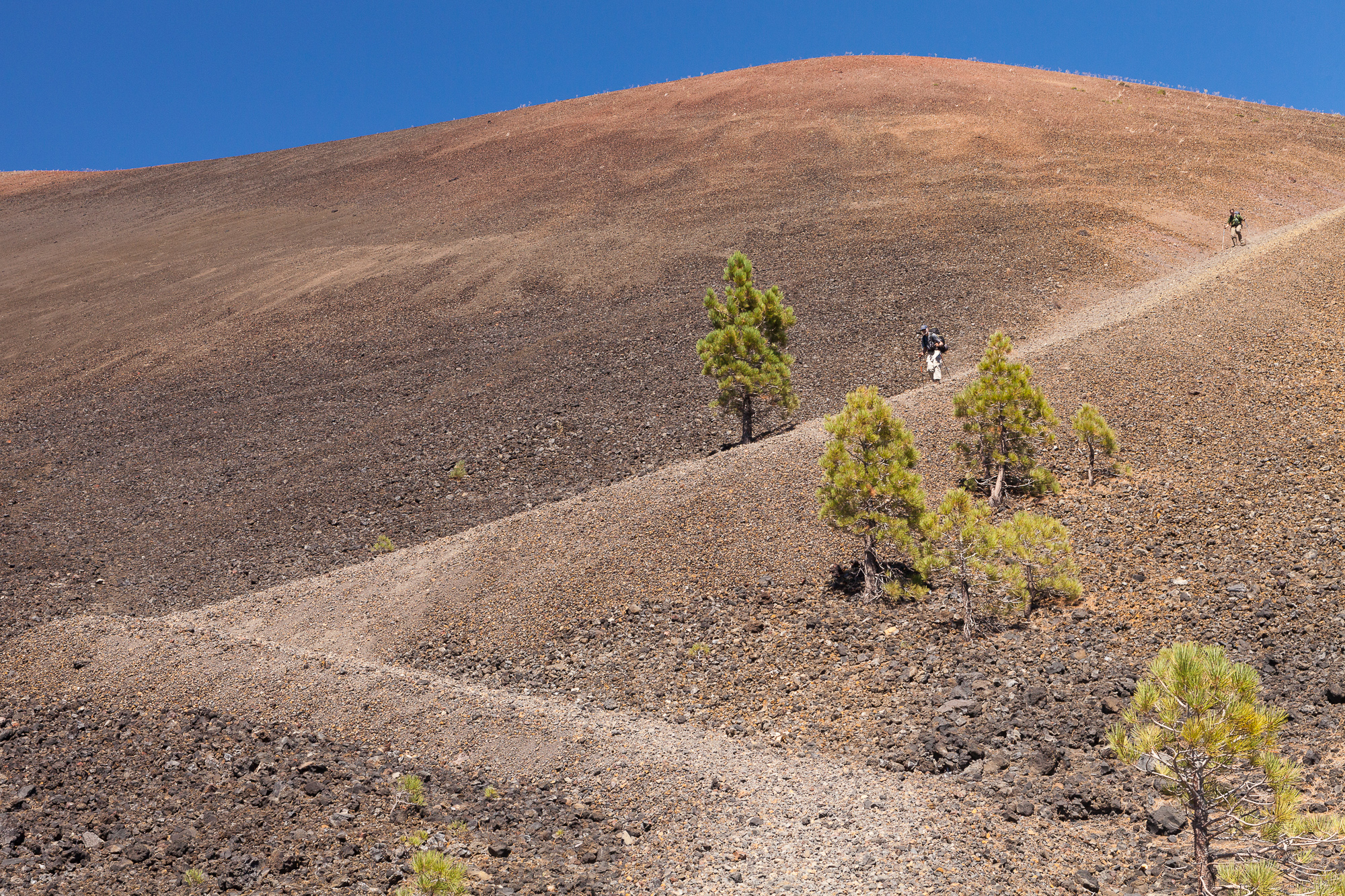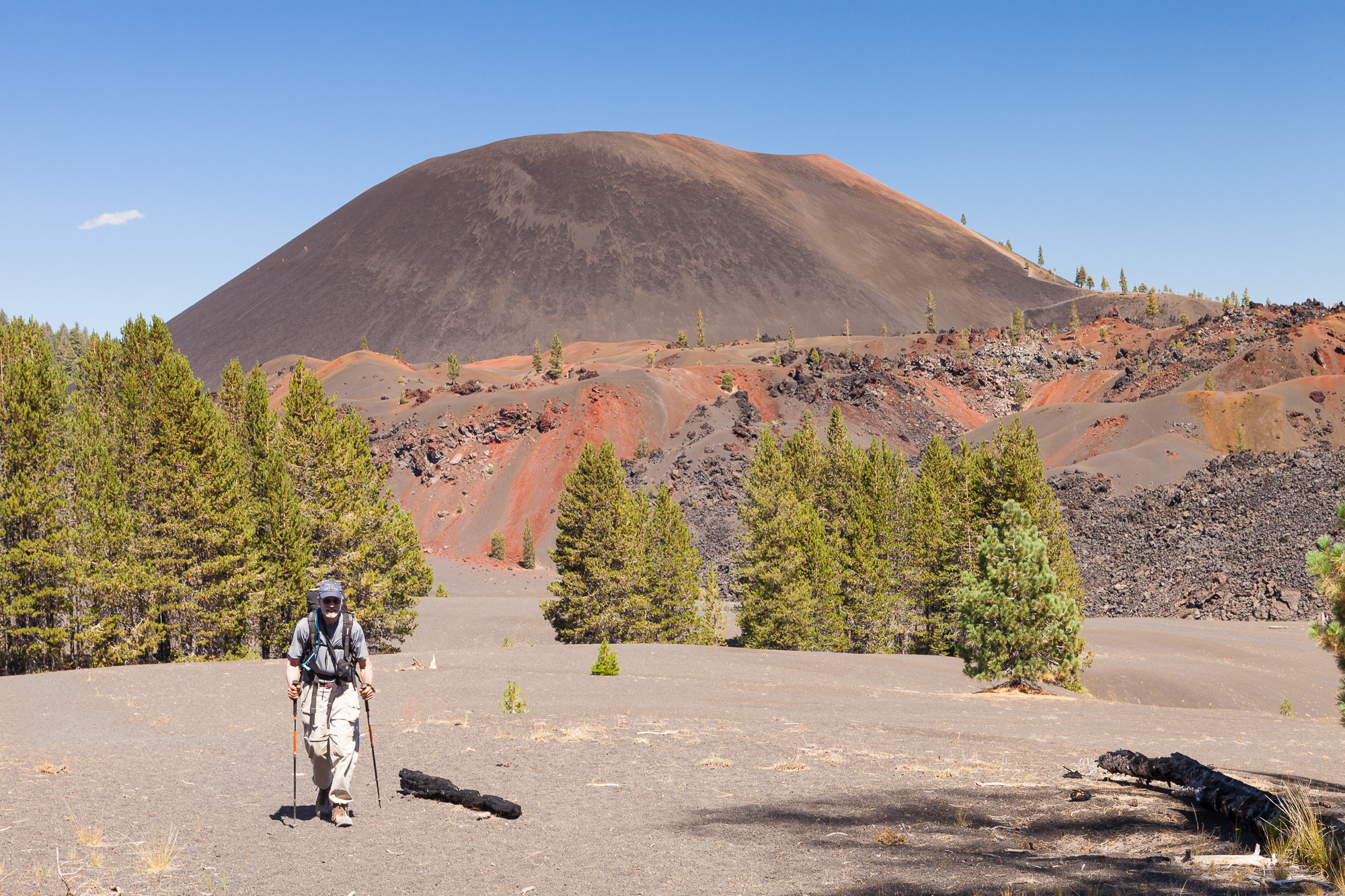
A couple of summers ago I met my brother and dad in Mt. Lassen National Park for a backpacking trip. This park sees one fraction of the backpacking that other national parks get. As a result, you get the feeling of having the back country to yourselves. More importantly for me, this trip would revolve around revisiting the Lassen Cinder Cone that sits in the east part of the park. We had been there many years before on a day hike, but backpacking would give me more time to explore it photographically.

We spent the night at Snag Lake, and in the morning, approached the Cinder Cone from the south. From there, we reached the steeper of the two trails that wind to the top. In the photo above, you can see my brother as a small speck as we neared the cone from the west.

The trail to the top is built using the loose volcanic scoria that makes up the cone itself. It is only a little more solid than walking up a sand dune, and is not for the faint of heart. This is due not only to the phyisical exhaustion that comes from pushing up such a slope, but also the steepness of the trail itself. At times I felt like I was going to tumble backward down the trail as my backpack made me somewhat off balance.

Those who reach the top are rewarded with spectacular views of Mt. Lassen to the west, as well as a chance to peer down into the crater of the cone. A trail even descends into the mouth of the crater, where you can stand next to thermal steam escaping from the ground.
The cinder cone was formed long ago by many small eruptions that threw lava into the air, which cooled into the loose, porous volcanic rock. Over time, this piled up into the 700 foot tall cone that we see today. It is thought to have erupted as recently as the 1650s, though the only activity that remains today is the steam rising from the crater.

Walking to the western edge of the crater, we were rewarded with views directly across from Mt. Lassen, as well as views of the Painted Dunes below.

The painted dunes are pumice fields formed by oxidation of volcanic ash from earlier eruptions of the Cinder Cone. Its beautiful colors formed because the ash fell on lava that was still hot and forming.

After a while at the top, and after we tired of braving the fierce wind, we descended the way we had come up. I tried not to think about the consequences of losing my footing, and took it step by step.

Soon we were down and continuing our day’s hike to our destination of Summit Lake. The promise of camp chairs and cold beer quickened our step. It was great to spend time up close with this unusual creation of nature.





